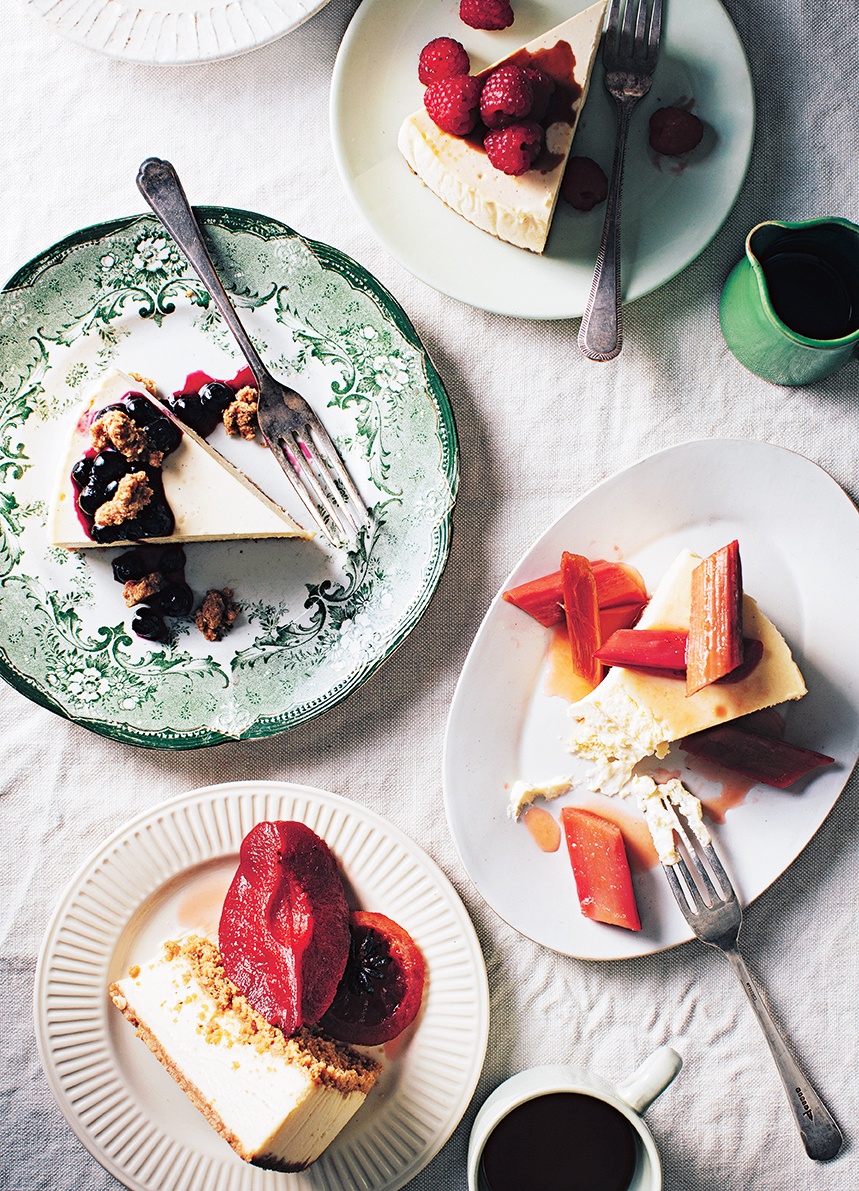Get Premium access to all the latest content online
Subscribe and view full print editions online... Subscribe
Serves 10-12 (Makes 1 X 20cm cheesecake) Desserts and puddings
Preheat the oven to 150C/130C Fan/Gas 2. Lightly spray a baking tray with cooking oil spray and
line with baking paper. Spray a 20cm-round, 7.5cm-deep cake tin with cooking oil spray and line the base and side with baking paper.
If you choose a tin where the base isn’t welded to the side (or a springform tin), you will need to wrap the outside of the tin with a triple layer of extra-wide foil so water won’t breach the tin.
To make the crumb base, combine the flour, brown sugar, salt and cinnamon in a wide mixing bowl. Heat the butter on the hob or in the microwave until just melted, then pour into the bowl. Mix together with your hands to a sticky crumble. Scatter the mix onto the prepared tray and bake for 25 minutes, until evenly brown. When cool, whizz in a food processor to a fine crumb.
Fill the base of the prepared cake tin with the crumb. Pack down the crumb lightly – the weight and moisture of the cheesecake mix will do the rest of the work. And you don’t want a base you have to really crunch through when eating. Reduce the oven to 120C/100C Fan/Gas 1⁄2.
While the base is cooking, start the cheesecake mix. Put the sugar and salt in the bowl of an electric stand mixer and stir to combine. Add the cream cheese, breaking it into chunks as you put it in the bowl. Using the paddle attachment, mix on a low speed to slowly cream the mix, scraping down the side of the bowl often with a flexible spatula. The goal is silky smooth, so just scrape and scrape to ensure that the mix is as lump-free as is possible.
Keeping it low and slow while creaming makes a dense and creamy consistency for the cheesecake and not an airy one.
Stay on a low speed and add the eggs in two batches, scraping well between each addition, then add the sour cream and vanilla and mix until combined. Remove the bowl from the mixer and give the mix a final hand whisk to ensure there are no lumps. Add a little of the lemon juice, then taste it before adding a little more, until you reach your tang threshold. Pour into the crumb-lined cake tin.
For the water bath, place a piece of kitchen paper in the base of a high-sided roasting tin. Sit the cheesecake in the roasting tin (the kitchen paper will stop it from sliding around) and pour in enough hot water to come one-third up the side of the cheesecake tin. Carefully lift the tin into the oven and bake for around 60 minutes. When it is ready, it should still have a slight wobble to the centre. A thermometer inserted into the centre should read 75C.
To make the topping, mix together the sour cream, sugar and vanilla with a plastic spatula until runny and pourable. Starting from the outside, pour the topping over the cheesecake, smoothing it gently towards the centre with an offset spatula.
If you pour the topping straight onto the centre, it can break the skin on the cheesecake and fall inside. The side, being a little more cooked than the middle, will hold the topping best, so start on the side and smooth it towards the centre. Return to the oven and bake for a further 15 minutes.
Remove the cheesecake and roasting tin from the oven and allow to cool in the water to room temperature. If you are using foil and you can see some water has breached the foil, lift the cheesecake tin out immediately and remove the foil so the base doesn’t become sodden, then leave to cool to room temperature. Lightly cover with cling film and chill overnight until set.
The next day, cover a flat plate or board (the base from a tart tin works well for this) with cling film and place on top of the cheesecake in its tin. Flip it over confidently and place the plate on the work surface. Lift a side of the tin and gently tease out the baking paper. This will loosen the cheesecake and, with a wiggle and a push on the base, it should release with ease.
If the cheesecake is stubborn, warm the tin by either giving it a quick flash with a blowtorch or draping a hot tea towel over the tin base. This softens the butter in the crumb to aid release.
Peel off the paper and invert again, so it is top-side up. Serve the cheesecake chilled.
This recipe was taken from the May 2020 issue of Food and Travel.
To subscribe today, click here.

Advertisement
Subscribe and view full print editions online... Subscribe